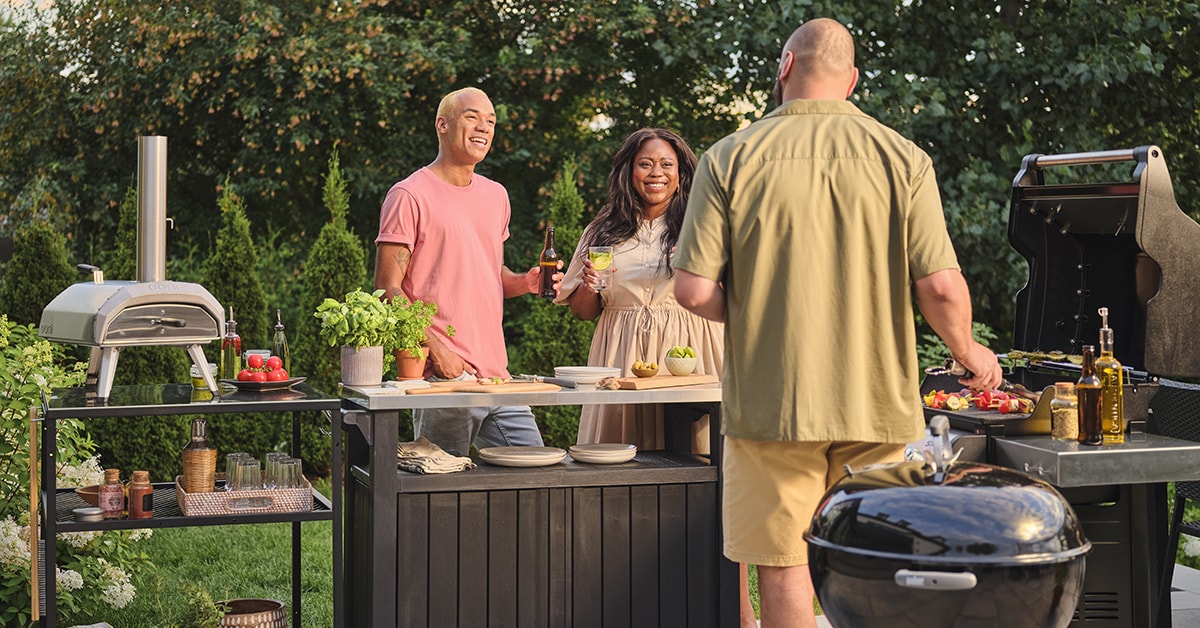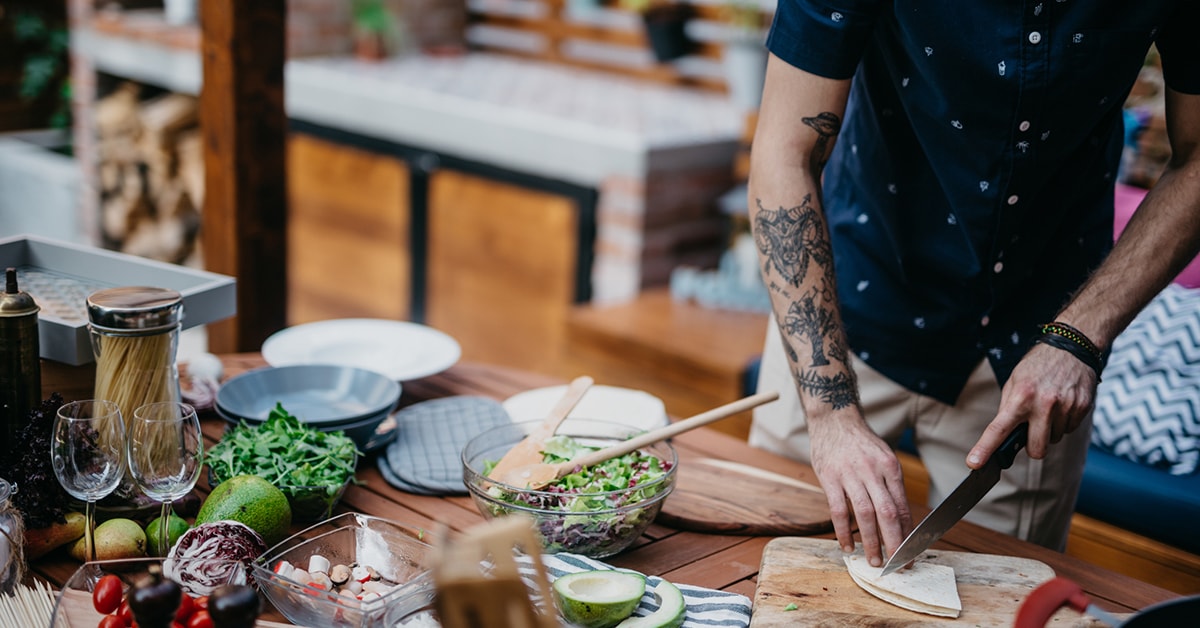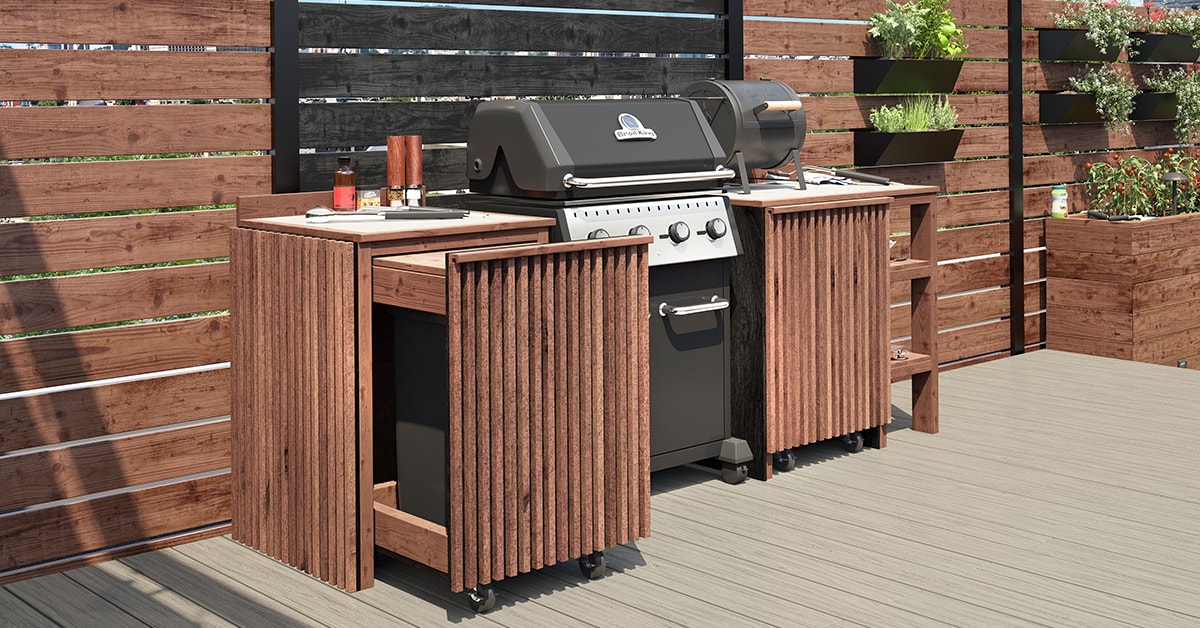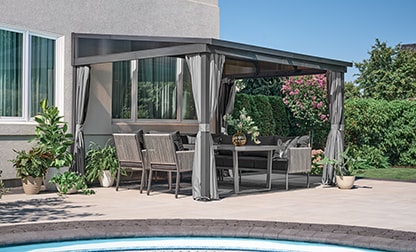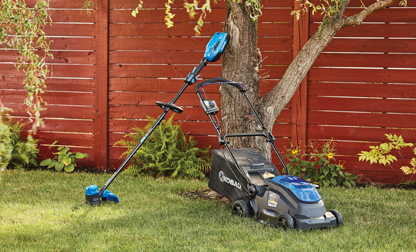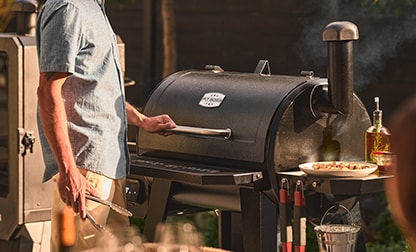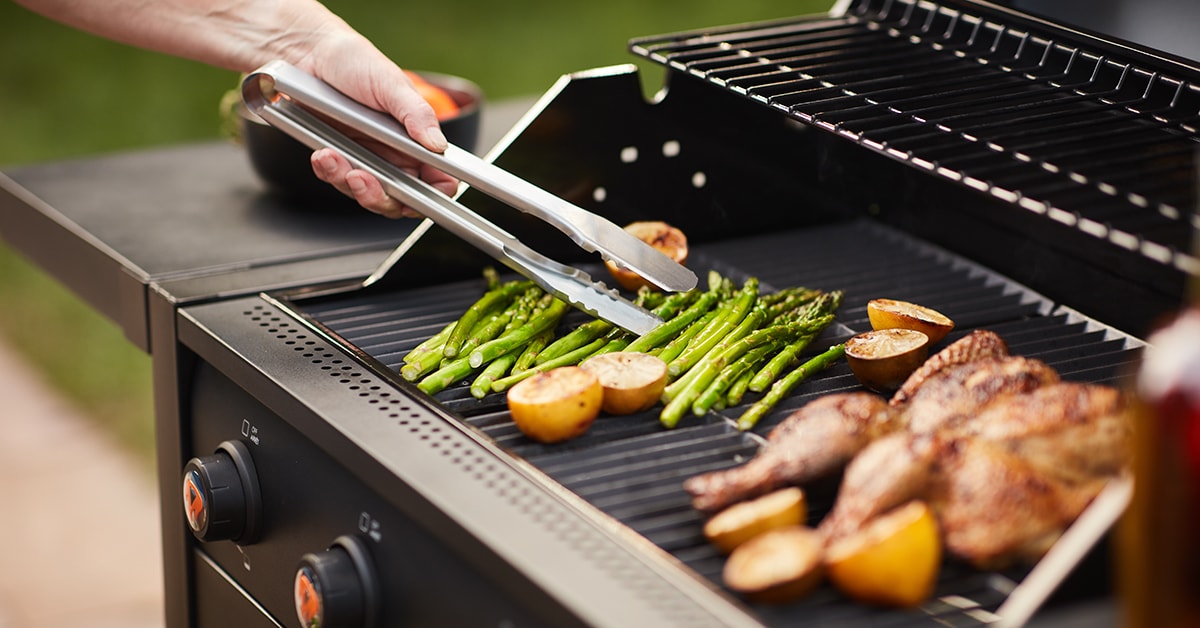
Updated on April 5, 2024
How to Properly Clean and Maintain a BBQ or Grill
Proper cleaning and maintenance of the BBQ, pizza oven, or griddle is the secret ingredient to great outdoor cooking. Following these simple steps at the beginning and end of the season, as well as throughout, will help you keep your grills in top condition for years to come.
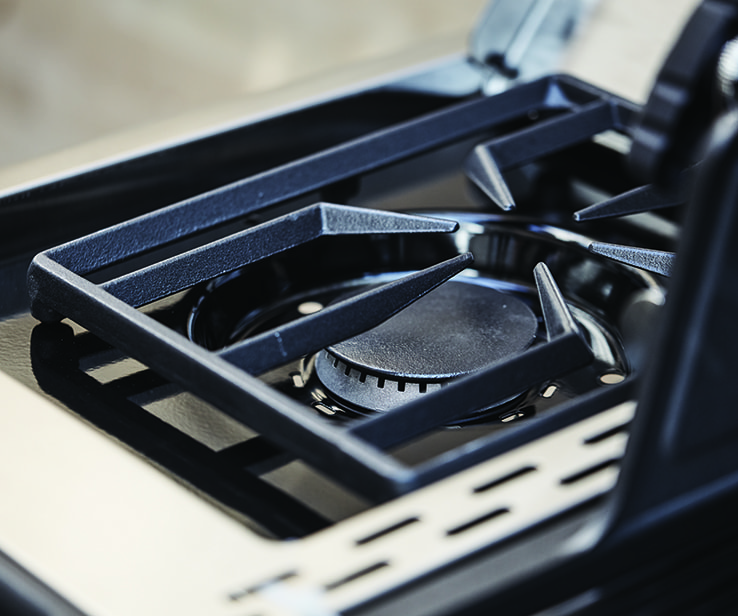
1Cleaning the Burner
Burner maintenance should be done at the start and end of the season. The cleaning process will be the same both times:
- 1.1Start by turning off the propane tank and removing the cooking grates.
- 1.2Detach the tubes and burner, taking care not to damage any components. The tubes can be cleaned with warm, soapy water. For the burner, wipe with a damp microfibre cloth.
- 1.3Towel dry the burner ports and clean out any remaining residue with a toothpick.
- 1.4Set the burner and the tubes aside until you’re finished cleaning the rest of the grill.
Pro Tip
It’s important to clean the feeder tubes that move the gas from the front controls to the burners. Spiders’ webs and small cocoons can interfere with gas flow to the burners, which compromises performance and creates a potential fire hazard around the controls. The best way to find out if the gas is flowing to the burner properly is to observe the flames: if the flames are yellowish and burn slowly, the tubes are probably blocked. To remove the obstruction, use a cleaner developed for this purpose.
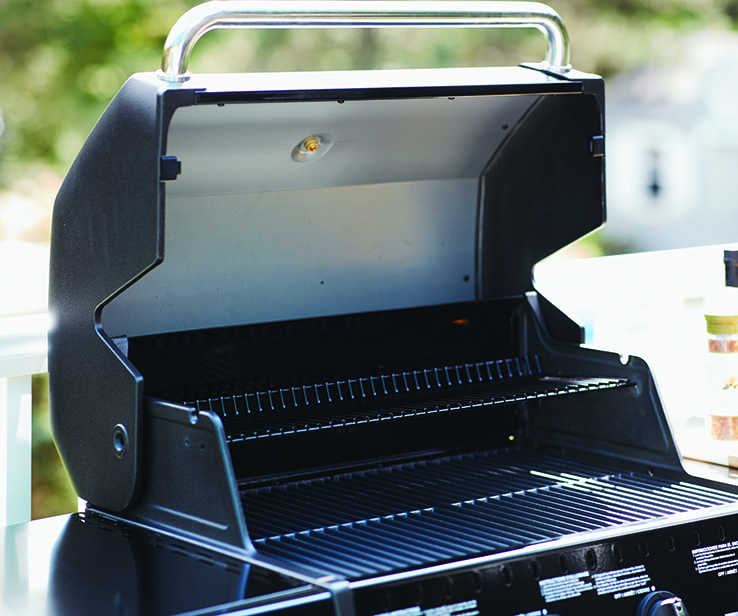
2Clean the Inside of Your BBQ
Here’s how:
- 2.1Start by covering the gas valves with aluminum foil to prevent corrosion.
- 2.2Then, take a long-handled, stiff-wire grill brush and scrub the grill’s interior using warm, soapy water. A grill cleaner can help tackle particularly tough grease spots.
- 2.3Once all debris and residues have been scraped off, rinse the inside of the barbecue thoroughly and dry with a cloth.
- 2.4When everything is completely dry, replace the burner and gas tubes.
3Burn Off the Grease
- 3.1Turn the briquettes over.
- 3.2Close the barbecue lid.
- 3.3Heat on high for approximately 15 minutes.
Pro Tip
Burn off the grease one last time after your last cookout, then give the grill its final wash.
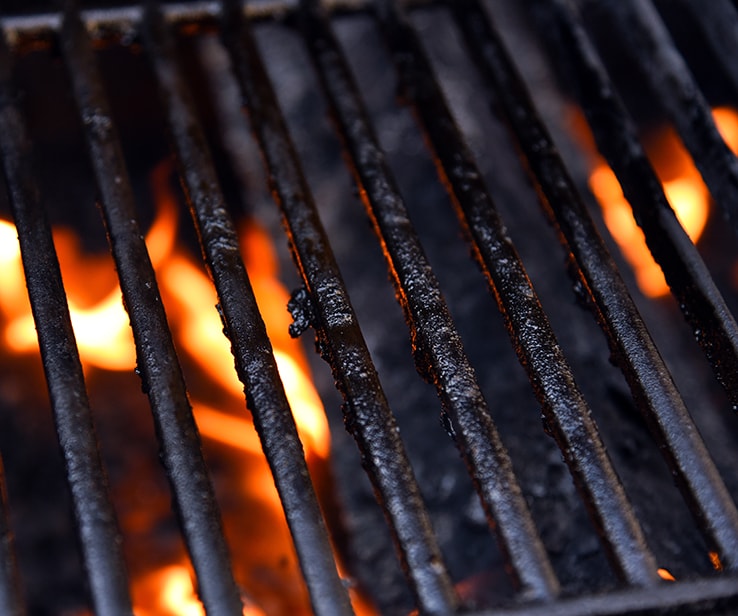
4Clean the Grates
- 4.1Remove the cooking grates and scrub them with a long-handled, stiff-bristled barbecue grill brush or scraper. Please note that cast iron is a porous material that can absorb water and rust. Use a stainless steel brush or spatula to remove burnt-on residue and embedded grease.
- 4.2Thoroughly towel dry the cooking grates and place them back into the grill.
- 4.3Apply a coat of vegetable oil to the grates once you are finished.
A Few Tips for Keeping Grates Clean
Smart Saving Tips
If you’re looking for a quick, easy, and budget-friendly way to clean your BBQ grates, give Coca-Cola a try! Place the grates in a large bin, then pour enough Coca-Cola to cover the grates. Let sit for a few minutes to allow the phosphoric acid to break down and dissolve any food residue. Scrub the grates, then rinse with water.
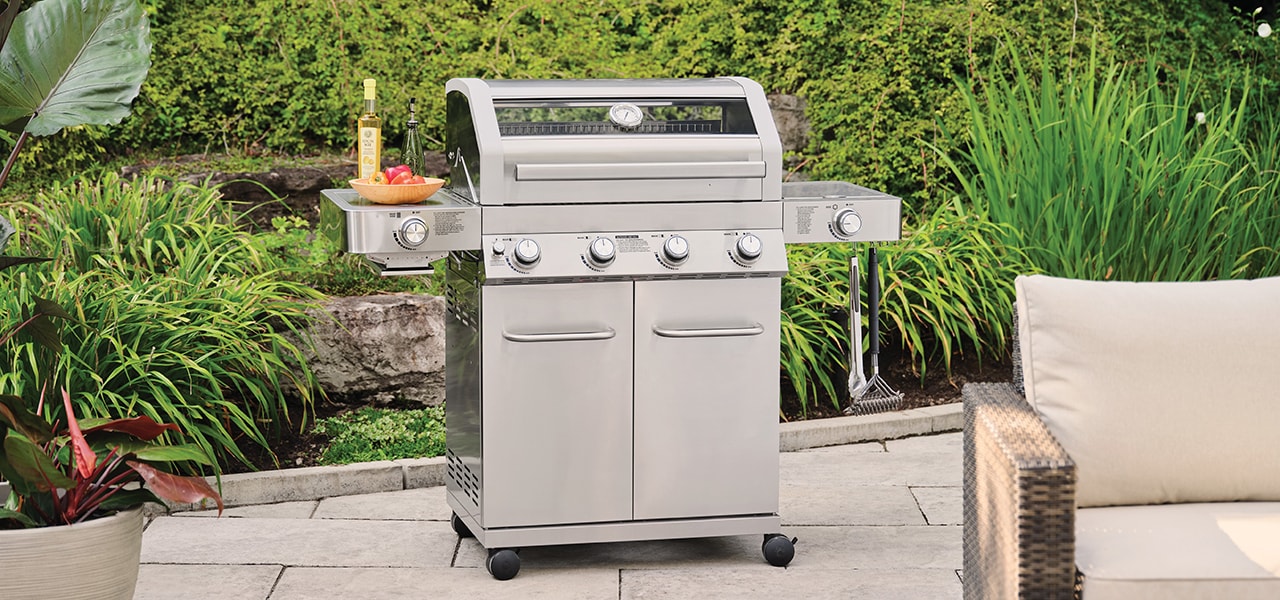
5Clean the Outside of the BBQ
- 5.1For a stainless steel lid, warm soapy water will generally be enough to remove most of the grease and grime. If a little more effort is required, use a sponge and rub in the same direction as the stainless steel grain. Going against the grain can leave marks on the surface, or even damage it. Rinse off any remaining soap with warm water and dry with a clean cloth. Finish with a stainless steel cleaner for a polished look.
- 5.2Porcelain-coated steel lids look fantastic, but they are relatively fragile and might crack or break if not handled with care. Treat them with care and clean them with a mild dishwashing soap and water solution. Dry the surface with a cloth and finish with a glass cleaner.
- 5.3A powder-coated steel lid may look like stainless steel, but it should be treated like an enamelled steel lid. Clean the cover with mild soap and water, then dry it off with a microfibre cloth. Be careful not to use stainless steel cleaners on powder-coated surfaces, as they may damage the finish.
- 5.4A painted lid can be cleaned regularly with soapy water, just like the other materials. If the surface shows signs of corrosion, you can refinish the lid with high-temperature spray paint. To do this, first remove the rust using sandpaper and a scraper. Wash, then allow to dry. When thoroughly dry, apply the paint according to the packaging instructions.
Pro Tip
No matter what type of surface material your grill is made out of, you can keep it protected while in storage and looking great every season with a quality BBQ cover.
6Check and Clean the Gas Feed Pipe
7Keep Propane Tanks in Good Condition
Propane tanks must be stored upright and outdoors, summer and winter alike. They must also be kept in an upright position during storage or transport.
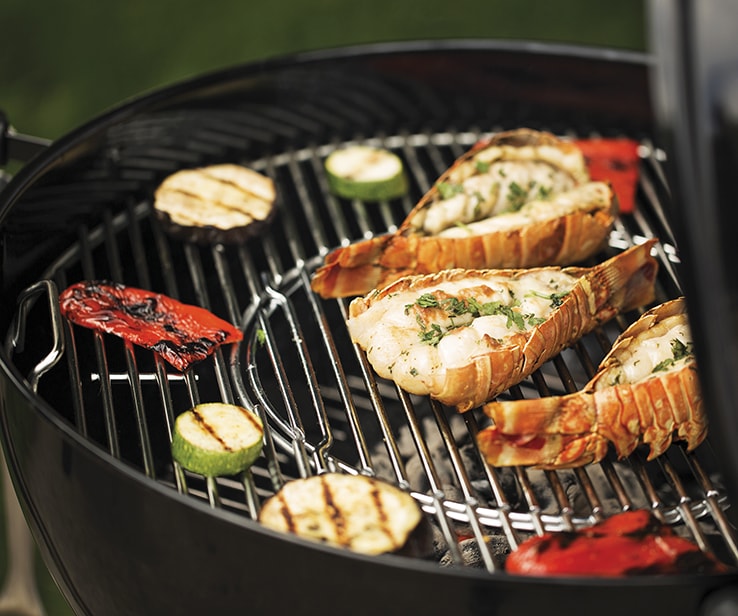
How to Clean Your Charcoal Grill
Surfaces are easier to clean while the grill is still hot. We recommend using a gril brush that can release water to make the grill cleaning process easier. You can also sprinkle a little water on the brush to achieve a similar effect. Make sure you also clean out the ash at the bottom of the grill after every use to prevent it from blocking the vents. Simply remove the charcoal briquettes when they have cooled and sweep up the ash.
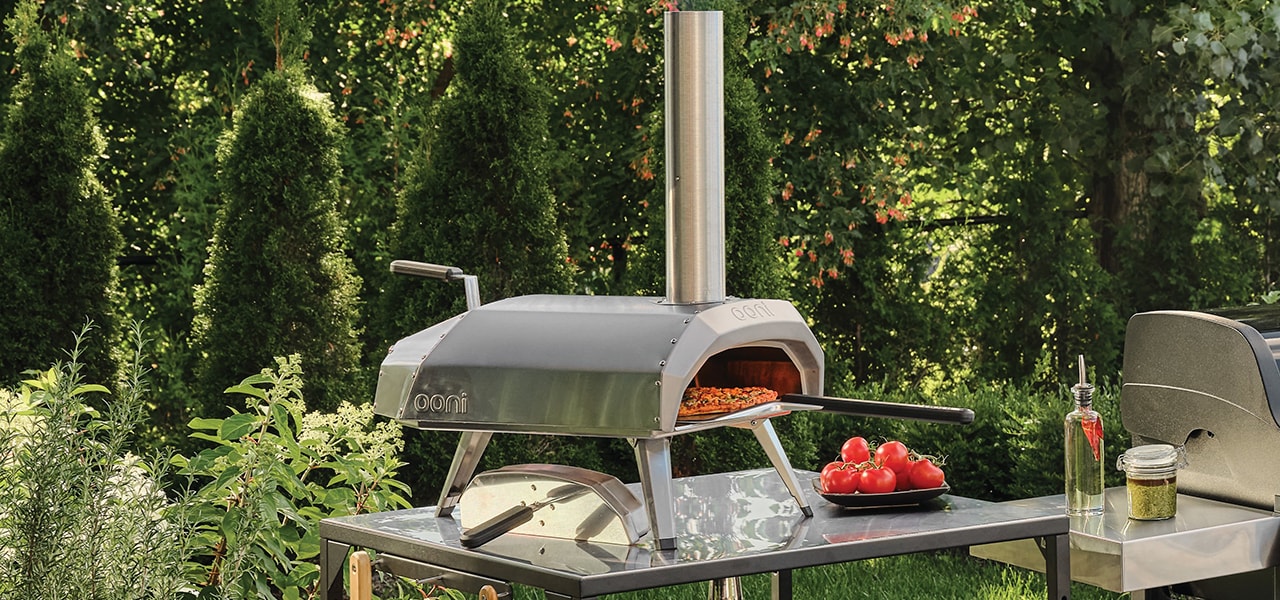
How to Clean Your Pizza Oven
- Before wiping down soot or clearing debris, make sure your oven is completely cool.
- To clean the inside of the oven, wipe down the surface with a dry paper towel. Always wear protective gloves when doing this.
- When cool, the outside of the oven can be wiped with a damp cloth and dried completely. The stainless steel exterior surfaces can then be cleaned using a stainless steel cleaner to remove any marks or smudges. Always avoid using water to clean the inside of your oven or stone.
Your stone baking board can be cleaned by running your pizza oven at top temperatures. If you need to remove hard-to-budge debris from the stone, use a hard bristle grill brush. After each cook, when your oven is completely cool you can flip the stone baking board for a fresh start the next time you cook – the high temperatures inside your pizza oven will naturally clean the underside.
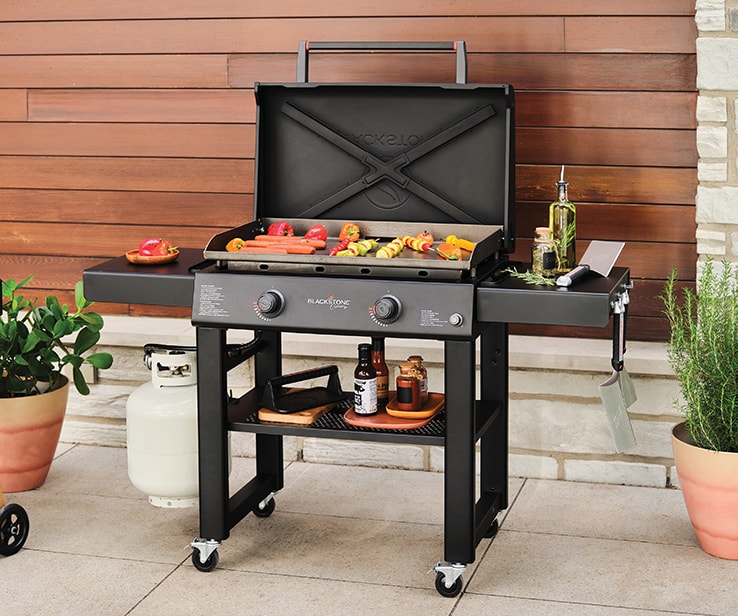
How to Clean Your Griddle
- Let the griddle cool down after cooking.
- Scrape the surface with a metal spatula or scraper.
- Wipe it down with a paper towel. You can use a dishcloth, but it can get greasy.
- For stuck on food, pour some water onto the griddle while it’s still warm. The hot water will make it easier for the harder residue to come off.
- Rinse off the water with paper towels.
- Dry it gently with a cloth.
- Coat with a layer of oil or Blackstone seasoning in between uses.















